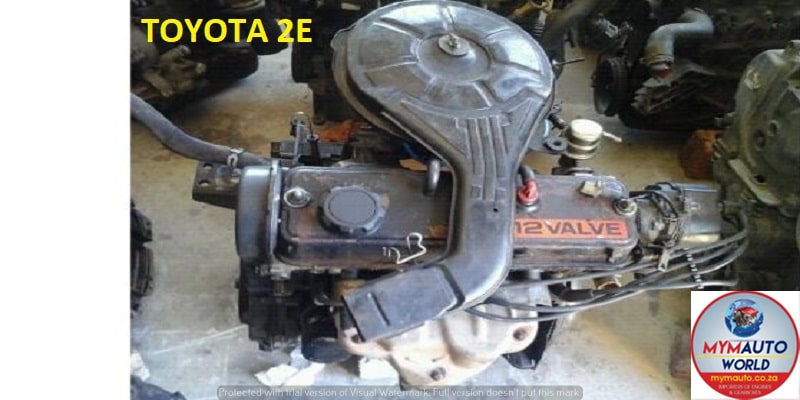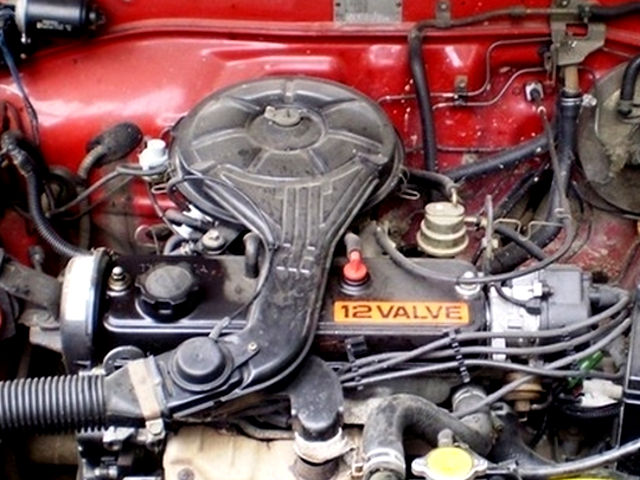Toyota Tazz: A Smart Investment for Those Seeking Low-Cost Maintenance
Check Out the most recent Fads in Engine Modern Technology Through Tazz
In the rapidly progressing landscape of auto modern technology, Tazz stands at the forefront, highlighting significant developments in engine systems that prioritize both development and sustainability. tazz. From hybrid engines that enhance fuel effectiveness to the appearance of hydrogen gas cells, the fads forming contemporary powertrains are not just improving performance however also attending to important ecological difficulties. As the market continues to push boundaries, it is vital to consider how these developments will affect future transportation services and the broader implications for international power usage. What lies ahead in this pivotal makeover?
Hybrid Engine Innovations
Crossbreed engine developments stand for an essential shift in vehicle innovation, incorporating the benefits of inner combustion engines with electrical propulsion systems. This combination not just improves gas effectiveness but additionally reduces exhausts, meeting significantly rigorous environmental policies. By utilizing both energy sources, hybrid engines can optimize efficiency, providing power when needed while conserving gas throughout less requiring driving conditions.
Current developments in hybrid modern technology include enhancements in battery performance and regenerative braking systems. These advancements enable higher power recuperation throughout deceleration, which can be redirected to help in velocity or power auxiliary systems. Suppliers are concentrating on compact designs and lightweight materials to optimize the performance of crossbreed powertrains.
The development of plug-in hybrids has actually likewise increased the marketplace, making it possible for drivers to charge their vehicles using conventional electric outlets. This attribute often allows for significant all-electric range, further decreasing dependence on traditional fuels. tazz. As the automotive industry remains to develop, hybrid engine technologies are expected to play an important function in bridging the gap between standard lorries and fully electrical versions, giving a transitional option that accommodates diverse consumer demands and choices
Developments in Electric Powertrains
The vehicle landscape is quickly progressing, with electric powertrains becoming a leading pressure in sustainable transportation. Breakthroughs in electrical car (EV) technology are considerably improving user, performance, and performance experience. Trick advancements include renovations in battery chemistry, which have increased power density, minimized charging times, and expanded general battery life.
Solid-state batteries, for instance, assure to reinvent the marketplace by offering better security and performance compared to typical lithium-ion cells. Developments in regenerative braking systems are making it possible for vehicles to recuperate power during deceleration, adding to total efficiency.
Along with battery modern technology, electrical motor designs are ending up being a lot more innovative. Developments such as integrated electric motors and progressed thermal management systems are helping to enhance power delivery and decrease weight, eventually boosting lorry dynamics.

Jointly, these breakthroughs emphasize the commitment to shift towards cleaner, more reliable transport options, placing electrical powertrains at the leading edge of automobile development.
The Rise of Hydrogen Gas Cells
Significantly, hydrogen fuel cells are acquiring grip as a sensible option to standard interior combustion engines and battery electrical automobiles. This innovation harnesses the chemical power kept in hydrogen, converting it right into electrical energy through an electrochemical reaction with oxygen. The primary result of this process is water, making hydrogen gas cells an eco-friendly alternative with no emissions at the tailpipe.

Automakers are progressively spending in hydrogen gas cell technology, acknowledging its possibility for long-range applications and quick refueling capabilities that match traditional fuels. Furthermore, markets such as sturdy transportation and public transportation are particularly well-suited for hydrogen fuel cells, where battery electric solutions may fall short due to weight and range limitations.
As research study and investment continue to expand, hydrogen fuel cells are poised to play a significant role in the future landscape of clean transport and power remedies.
Enhancements in Internal Burning Engines
Technologies in inner burning engine (ICE) modern technology are changing standard automobiles to satisfy contemporary environmental standards and efficiency assumptions. One of the most significant improvements entails the assimilation of sophisticated fuel injection systems. These systems enhance the air-fuel combination, boosting combustion efficiency and causing lowered discharges. Direct gas shot, for example, enables far better atomization of gas, resulting in more full combustion and enhanced power result.
Furthermore, turbocharging has gotten prominence, enabling smaller engines to supply higher efficiency without the weight of bigger engines - tazz. This technology not just boosts performance but likewise adds to reduce gas usage. Variable valve timing systems are additionally being refined, allowing engines to adjust to different driving problems for improved torque and responsiveness
Additionally, making use of lightweight products in engine construction is ending up being standard, additional boosting gas effectiveness by reducing general automobile weight. Engine control units (ECUs) are progressively innovative, making it possible for real-time adjustments that official statement enhance efficiency and emissions.
These enhancements collectively represent a crucial shift in ICE technology, lining up with international sustainability objectives while still providing the performance motorists anticipate from their lorries. As the industry develops, these enhancements remain to form the future of typical automotive engineering.
Future Patterns in Engine Effectiveness
Considerable improvements in engine performance are prepared for as manufacturers focus on integrating cutting-edge technologies to meet strict environmental policies and consumer demands. The shift towards electrification, hybrid systems, and alternative gas is improving the auto landscape, driving innovations that boost gas economic situation and lower discharges.
Among the crucial patterns is the application of advanced materials and making strategies. High-strength alloys and lightweight composites add to minimized automobile weight, thus improving overall performance. In addition, the adoption of turbocharging and variable valve timing modern technologies enables enhanced power outcome from smaller engines, better improving fuel economy.

Final Thought
In verdict, the exploration of engine modern technology reveals substantial advancements that focus on sustainability and efficiency. Advancements in crossbreed engine systems, electric powertrains, and hydrogen fuel cells show a commitment to minimizing exhausts while boosting performance. Moreover, improvements in interior burning engines and an emphasis on lightweight materials add to total engine efficiency. As the vehicle sector remains to evolve, these patterns will certainly official statement play a critical role fit a cleaner and more lasting future for transport.
From hybrid engines that enhance fuel effectiveness continue reading this to the introduction of hydrogen gas cells, the patterns forming contemporary powertrains are not only improving performance however likewise dealing with important ecological difficulties.Hybrid engine developments represent a critical shift in automotive technology, incorporating the advantages of inner burning engines with electric propulsion systems.Additionally, turbocharging has obtained prestige, permitting smaller sized engines to provide higher efficiency without the weight of bigger engines. Furthermore, the adoption of turbocharging and variable shutoff timing modern technologies enables for improved power output from smaller sized engines, additionally improving fuel economic situation.
Renovations in interior combustion engines and an emphasis on light-weight materials add to general engine efficiency.